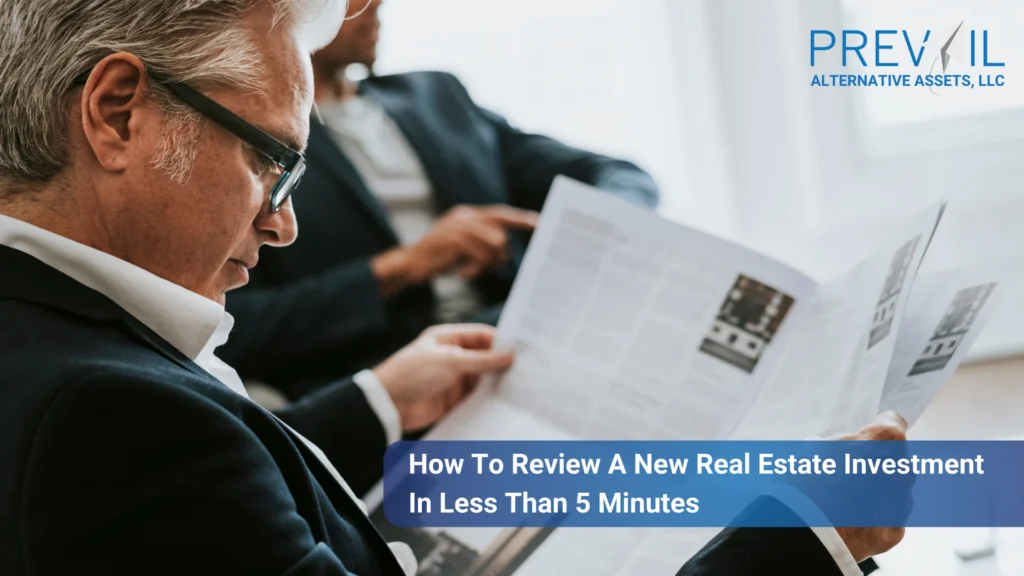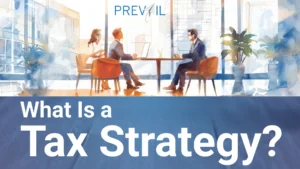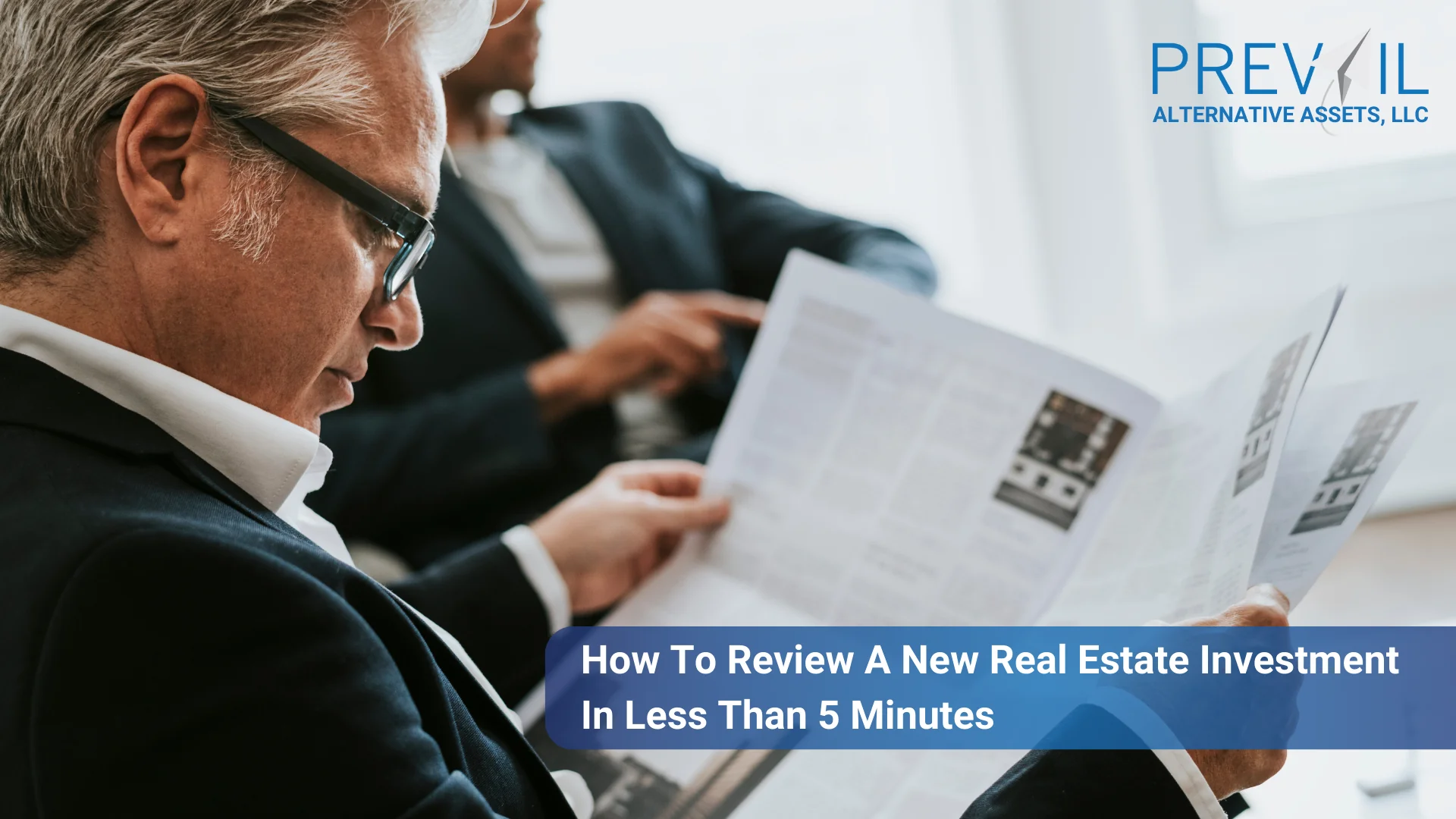You’ve been there, on that shopping trip where you kind of know what you are looking for, browse the entire store, toss things into the cart you “gotta have”, realize at checkout you didn’t really need them……and walk out of the store without what you needed, with less cash and having blown several hours.
Reviewing investment options can be similar. It’s possible you get peppered with real estate investment opportunities – emails, phone calls, tips from a guy that knows a guy – all loaded with terms – Class B, Cash on Cash, IRR, ARR, Cap Rate, Equity Multiple, and on and on. That all can fill your investment shopping cart up and drag you over to aisle 57 with no hope of making the check-out line anytime soon.
So how do you translate that potential 2-hour meandering into either a crisp 5 minute “no thanks” or “I should check this out further?”
Real Estate Deal At First Glance
You are going to get an email (or a call) that is a new deal alert, “reserve your spot”, “open forbids” or something similar. It is chock full of good information, but what are the key criteria that you can sort quickly on?
- Asset type – Do you like multi-family and won’t consider warehouses? A medical office is good but not retail?
- Market – Love Dallas, but stay out of New York City?
- How much cash and when – If the minimum is $50,000 but then need it next Friday and you can’t get it by then – pass.
- Hold Time – Is 7 years too long without access to your money? 3 years is ok?
All these first glance items will typically be easily found in the initial communication and can help determine whether to dig a little deeper or pass immediately.
The Numbers
Once you’ve seen that the deal passes your initial goal screening, dig a little deeper into the numbers. For example, you might see a deal that highlights:
- 8% preferred return
- 9% average cash-on-cash return
- 2.0x equity multiple
- 17% IRR (internal rate of return)
- 20% ARR (average annual return) including sale
What in the world does all that mean for a $50,000 investment?
In time, you’ll likely be able to do these calculations in your head, but for now, let’s assume that this is the first time you’ve seen it.
Preferred Return and Cash-On-Cash – Preferred return is a common structure for real estate deals and means that the first percentage (in this example, 8%) goes 100% to the limited partner passive investors. Sponsors (the general partners) don’t receive any returns until the project earns more than that.
This means if you invested $50K and everything went as planned, you would see 8% of $50K or $4,000 return this year or about $333 per month. That cash would then be distributed according to the terms of the deal. And, since Cash-on-Cash on this example is projected at a 9% average, at some point in time it is expected the property will payout above the 8% preferred return.
Equity Multiple – This next number on the list tells you how much your investment is expected to grow during the project.
Using the same $50K example, with a 2x equity multiple would work out to a total of $100,000 once the asset is sold. That is a combination of annual cash flow distributions and your share of profits from the sale.
IRR and AAR – These last two typical return metrics are similar but different in an important way. Average Annual Return (AAR) tells you what the average of a year’s earnings is over the life of the hold time. In this example, your $50K is expected to double to $100K over the next 5 years. When the total return of 100% is divided by the 5-year hold period, your average annual return is 20%.
By contrast, the Internal Rate of Return (IRR) effectively takes the average annual return and adjusts for the timing for the year when the money is received. Since most of the earnings in this example are expected later at the sale, that time has a cost associated with it and IRR takes that into account.
The Decision – After a quick 5-minute analysis of these data points, you should be able to tell if this real estate deal is a potential yes or no for your objective. It isn’t a final decision… you are not wiring money this afternoon! But it does mean you can decide to spend more time reading the full investment profile and completing your due diligence. Depending on the situation, it may also mean that you can let the sponsor know you are interested in requesting the full investment documents or submitting a soft reserve.
Conclusion
Evaluating new real estate investment opportunities can be exciting, but if you get quickly lost in the weeds, they can be overwhelming as well. Whether your cash is ready to go or is still in limbo being rolled over into a self-directed IRA, it’s critical to know exactly what you are looking for so you can invest in the best deal at the best time.
With the data points above, you’ll be able to quickly determine if a real estate deal is worth your time and energy right off the bat.
Contact our team of advisors today for more information.



















